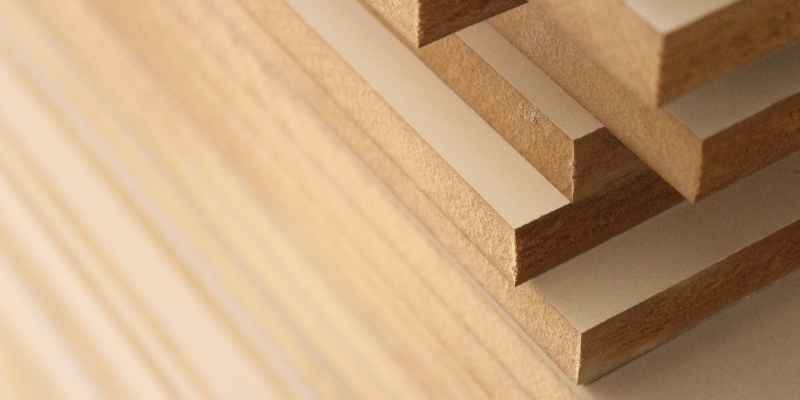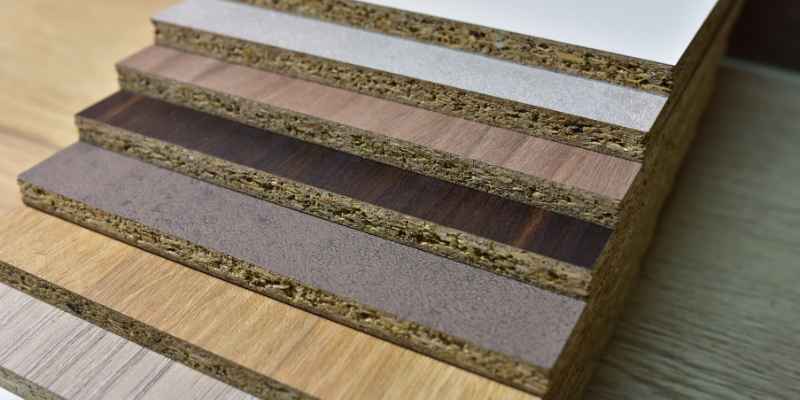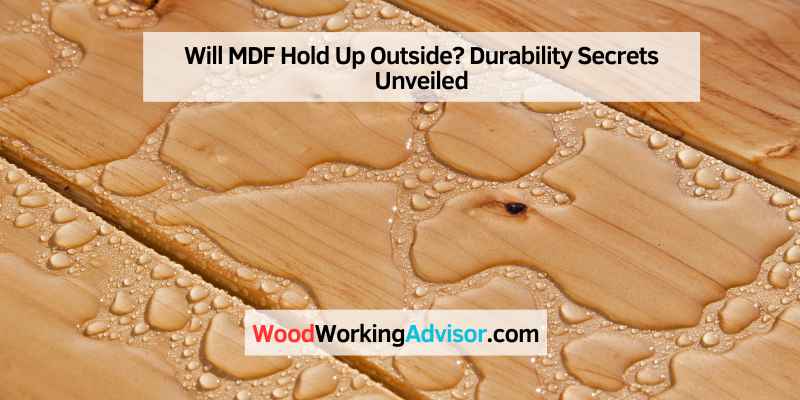MDF will not hold up well outside. Exposure to moisture and weather elements can cause it to deteriorate quickly.
Medium Density Fiberboard (MDF) is a popular material for indoor projects due to its smooth surface and affordability. MDF consists of wood fibers mixed with resin and compressed under high pressure, creating a dense and consistent board. Despite its indoor advantages, MDF is not suitable for outdoor use.
Outdoor conditions, including moisture, rain, and humidity, can cause MDF to swell, warp, and eventually break down. Unlike solid wood or weather-resistant materials, MDF lacks the durability needed to withstand the elements. For outdoor projects, opt for materials specifically designed to endure weather conditions, such as treated wood, plastic, or metal.
Mdf In Outdoor Environments
MDF is not ideal for outdoor use. It can absorb moisture quickly. This makes it swell and break down. Rain and humidity can damage MDF. Direct sunlight can also harm MDF. It can cause the material to warp. Protecting MDF outside is difficult.
Weather changes can affect MDF badly. The material can expand in rain. It can shrink in dry weather. This makes MDF less stable. Coating MDF might help but not for long. The coating can wear off. Water can then seep in.

Durability Factors For Mdf
MDF stands for Medium-Density Fiberboard. It is made from wood fibers and resin. MDF is denser than plywood but less durable. Water is MDF’s biggest enemy. It swells and warps when exposed to moisture. Outdoor use can damage MDF quickly. Always seal MDF edges to protect it.
MDF is strong but not as strong as solid wood. High density gives it good strength. Still, MDF breaks under heavy weight. Outdoor conditions make it weaker. Humidity and temperature changes affect its density. MDF’s strength is ideal for indoor use only. Outdoor exposure reduces its lifespan.
Protective Measures For Mdf
Sealing MDF is very important. Use a high-quality primer. It helps to block moisture. After priming, apply a waterproof paint. This adds another layer of protection. Polyurethane coatings can also be used. They create a tough barrier. Make sure to cover all edges and surfaces. This will help the MDF last longer.
Check the MDF regularly. Look for any damage or wear. Reapply the coating if needed. Clean the surface with a damp cloth. Avoid using harsh chemicals. They can damage the finish. Keep the MDF dry. Moisture is the biggest enemy. Cover it during rain. This will help in keeping it safe.
Alternatives To Mdf For Outdoor Use
Solid wood lasts longer outside than MDF. Cedar is a great option. It resists rot and insects. Teak is another good choice. It’s naturally water-resistant and durable. Redwood is also excellent for outdoor use. It doesn’t warp easily and can withstand the elements. Pressure-treated lumber is more affordable. It has chemicals to prevent decay and insect damage.
Composite decking is a modern solution. It looks like wood but is made of plastic and wood fibers. Plastic lumber is another option. It doesn’t rot, splinter, or need painting. Fiber cement board is strong and durable. It resists moisture and pests. Metal sheets like aluminum or steel can also be used. They are sturdy and weather-resistant.
Real-world Applications
MDF is often used indoors. People use it for furniture and cabinets. Some people tried using it outdoors. They wanted to see if it would last. They built garden boxes and outdoor tables. After a few months, they saw problems. The MDF started to swell. It also began to break apart. Water and weather caused the damage. These case studies show that MDF is not good for outdoor use. It cannot handle rain and sun for long.
Experts agree that MDF is not suitable for outdoor use. They say it absorbs water easily. This makes it swell and break. They suggest using other materials. Wood and plastic are better choices. These materials can handle weather. Experts also say to seal the edges if you must use MDF. This helps a little but is not a perfect solution.
Repair And Restoration
MDF is not recommended for outdoor use due to its susceptibility to moisture and swelling. Opt for weather-resistant materials for lasting outdoor repairs and restorations. Protecting MDF with waterproof sealants can provide temporary solutions.
Dealing With Damage
MDF is not very durable outside. It can swell and break when wet. It is best to keep MDF dry at all times. Once wet, the damage might be hard to fix. Sanding the damaged area can help. Use a good sealer to protect it. Paint can also help keep water out. Always inspect MDF items for early signs of damage.
Restoration Techniques
Restoring MDF is possible. Start by drying the item completely. Sand down any swollen areas. Next, apply a wood filler to cracks or holes. Let the filler dry and sand it smooth. Seal the MDF with a primer. Finally, paint the surface to protect it. Regular maintenance is key to keeping MDF in good shape.

Conclusion: Mdf’s Outdoor Viability
MDF’s outdoor viability depends on several factors, including weather conditions and protective treatments. Without proper sealing, MDF may deteriorate quickly when exposed to moisture.
Summary Of Findings
MDF is not suitable for outdoor use. Moisture can damage MDF easily. MDF swells and breaks apart when exposed to water. MDF needs sealing to last longer outside. Sealing adds extra cost and effort. Paint can help protect MDF, but only for a short time. Outdoor conditions are harsh for MDF. Rain and humidity are the main problems.
Future Prospects
New treatments might help MDF in the future. Research is ongoing to make MDF stronger. Better waterproofing methods are being tested. Manufacturers are looking for solutions. Alternatives like treated wood are still better. Outdoor MDF could be possible one day. For now, use other materials for outdoor projects.
Frequently Asked Questions
How To Treat Mdf For Outdoor Use?
Seal MDF with a waterproof primer. Apply exterior-grade paint for added protection. Use a water-resistant sealant on edges. Sand surfaces before each coat. Ensure proper curing time for durability.
Is Mdf Ok For Outdoor Use?
MDF is not ideal for outdoor use. It absorbs moisture and can warp or swell. Use exterior-grade materials instead.
Can Mdf Sit Outside?
MDF is not suitable for outdoor use. It absorbs moisture, swells, and deteriorates quickly when exposed to the elements. For outdoor projects, choose materials like treated wood or marine plywood.
Conclusion
MDF is not ideal for outdoor use due to moisture vulnerability. It’s best suited for indoor projects. For outdoor applications, consider weather-resistant materials like treated wood or marine plywood. Proper material choice ensures durability and longevity. This avoids future repairs and replacements, saving time and money.
Choose wisely for lasting results.

